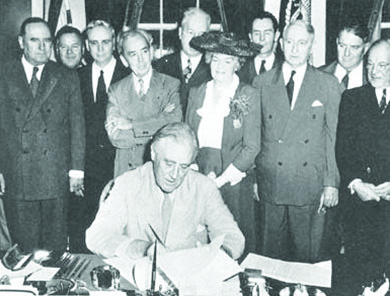| << Chapter < Page | Chapter >> Page > |
Readjustment to postwar life was difficult for the returning troops. The U.S. Army estimated that as many of 20 percent of its casualties were psychological. Although many eagerly awaited their return to civilian status, others feared that they would not be able to resume a humdrum existence after the experience of fighting on the front lines. Veterans also worried that they wouldn’t find work and that civilian defense workers were better positioned to take advantage of the new jobs opening up in the peacetime economy. Some felt that their wives and children would not welcome their presence, and some children did indeed resent the return of fathers who threatened to disrupt the mother-child household. Those on the home front worried as well. Doctors warned fiancées, wives, and mothers that soldiers might return with psychological problems that would make them difficult to live with.
Well before the end of the war, Congress had passed one of the most significant and far-reaching pieces of legislation to ease veterans’ transition into civilian life: the Servicemen’s Readjustment Act, also known as the GI Bill ( [link] ). Every honorably discharged veteran who had seen active duty, but not necessarily combat, was eligible to receive a year’s worth of unemployment compensation. This provision not only calmed veterans’ fears regarding their ability to support themselves, but it also prevented large numbers of men—as well as some women—from suddenly entering a job market that did not have enough positions for them. Another way that the GI Bill averted a glut in the labor market was by giving returning veterans the opportunity to pursue an education; it paid for tuition at a college or vocational school, and gave them a stipend to live on while they completed their studies.

The result was a dramatic increase in the number of students—especially male ones—enrolled in American colleges and universities. In 1940, only 5.5 percent of American men had a college degree. By 1950, that percentage had increased to 7.3 percent, as more than two million servicemen took advantage of the benefits offered by the GI Bill to complete college. The numbers continued to grow throughout the 1950s. Upon graduation, these men were prepared for skilled blue-collar or white-collar jobs that paved the way for many to enter the middle class. The creation of a well-educated, skilled labor force helped the U.S. economy as well. Other benefits offered by the GI Bill included low-interest loans to purchase homes or start small businesses.
However, not all veterans were able to take advantage of the GI Bill. African American veterans could use their educational benefits only to attend schools that accepted black students. The approximately nine thousand servicemen and women who were dishonorably discharged because they were gay or lesbian were ineligible for GI Bill benefits. Benefits for some Mexican American veterans, mainly in Texas, were also denied or delayed.

Notification Switch
Would you like to follow the 'U.s. history' conversation and receive update notifications?